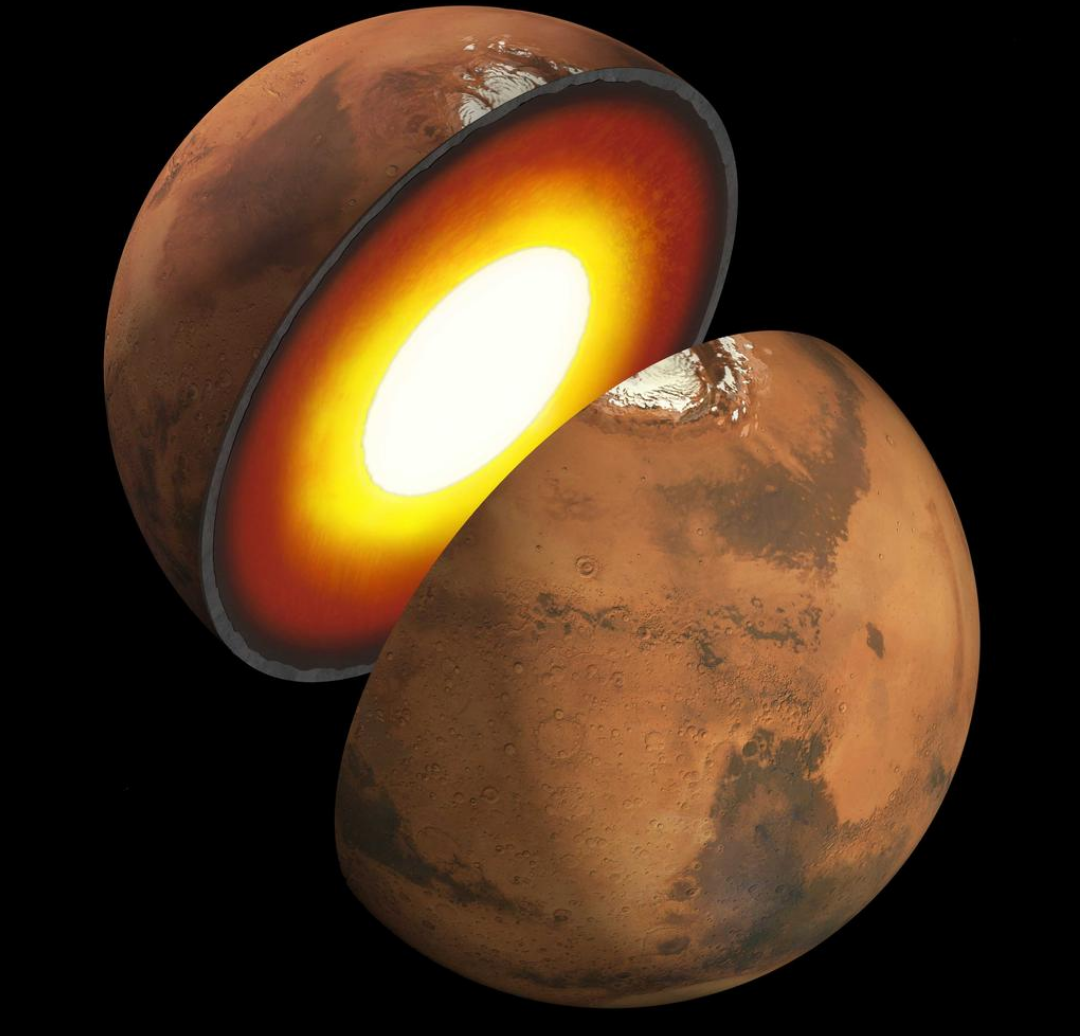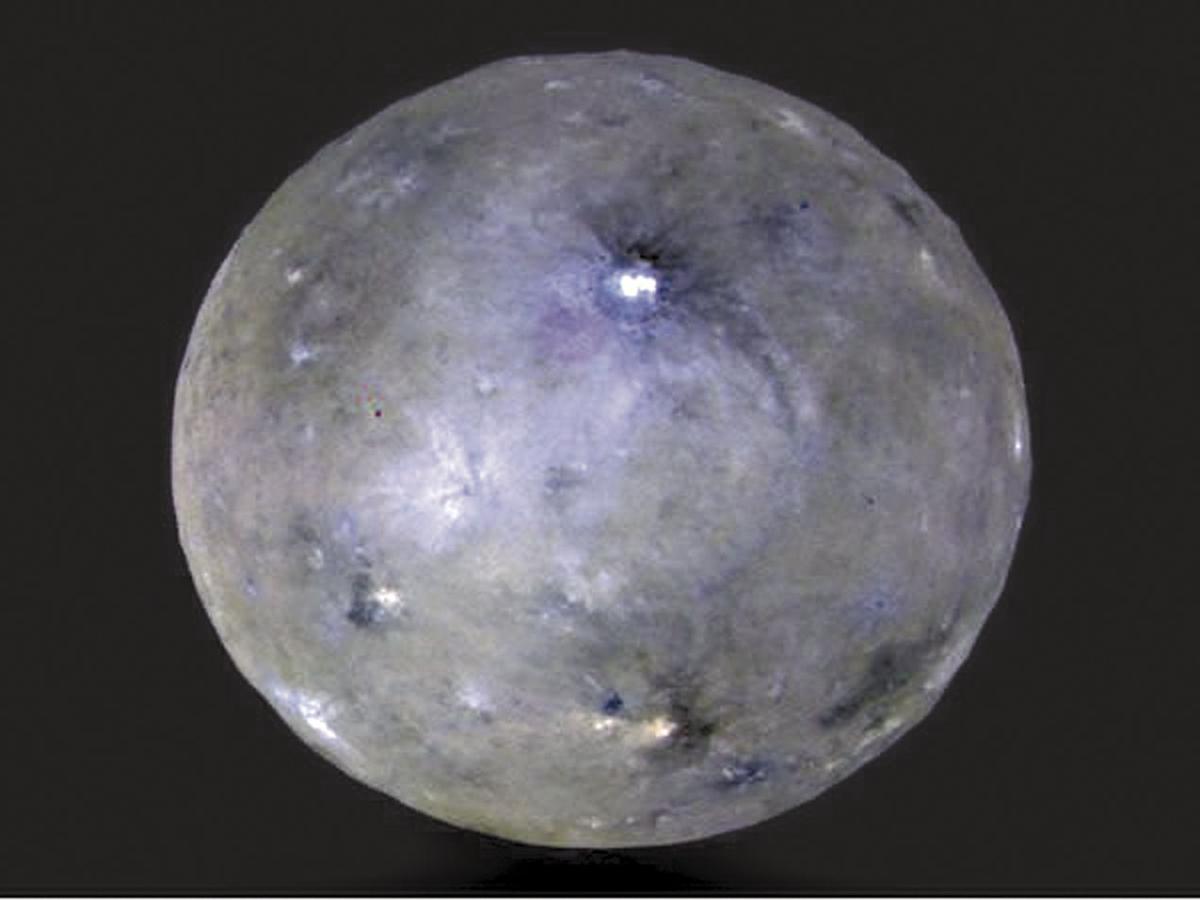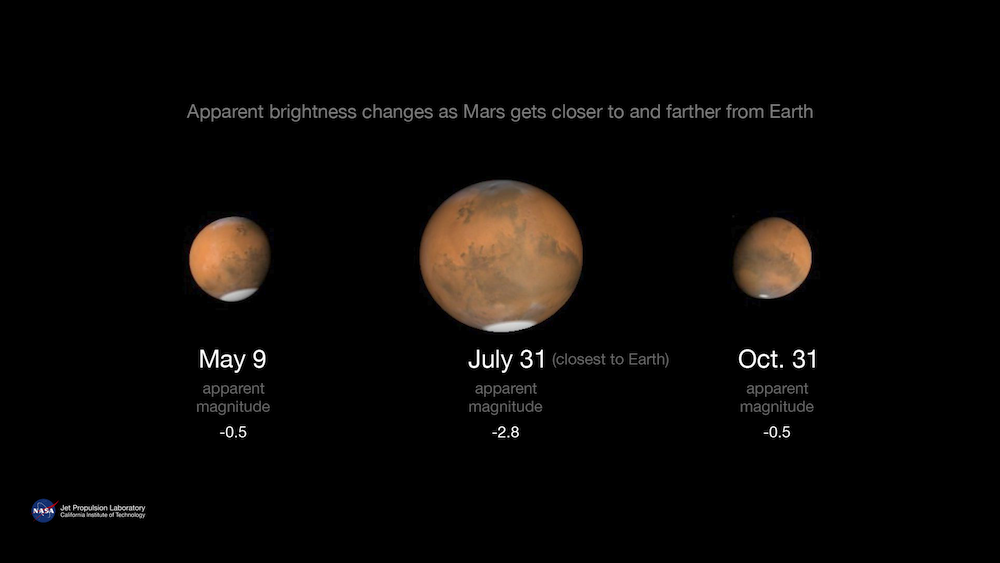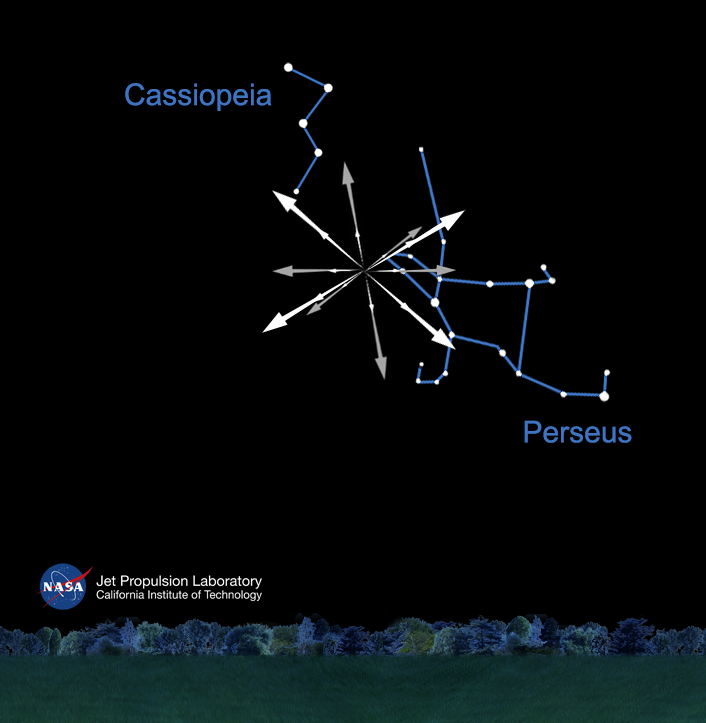Next Launch
Total Students
2,609
Total Launches
683
Eggs Survived
418 61.2%
Rockets Survived
536 78.5%
April 1, 2018
What's It Like Inside Mars?
by Jessica Stoller-Conrad
Mars is Earth's neighbor in the solar system. NASA's robotic explorers have visited our neighbor quite a few times. By orbiting, landing and roving on the Red Planet, we've learned so much about Martian canyons, volcanoes, rocks and soil. However, we still don't know exactly what Mars is like on the inside. This information could give scientists some really important clues about how Mars and the rest of our solar system formed.
This spring, NASA is launching a new mission to study the inside of Mars. It's called Mars InSight. InSight-short for Interior Exploration using Seismic Investigations, Geodesy and Heat Transport-is a lander. When InSight lands on Mars later this year, it won't drive around on the surface of Mars like a rover does. Instead, InSight will land, place instruments on the ground nearby and begin collecting information.
Just like a doctor uses instruments to understand what's going on inside your body, InSight will use three science instruments to figure out what's going on inside Mars.
One of these instruments is called a seismometer. On Earth, scientists use seismometers to study the vibrations that happen during earthquakes. InSight's seismometer will measure the vibrations of earthquakes on Mars-known as marsquakes. We know that on Earth, different materials vibrate in different ways. By studying the vibrations from marsquakes, scientists hope to figure out what materials are found inside Mars.
InSight will also carry a heat probe that will take the temperature on Mars. The heat probe will dig almost 16 feet below Mars' surface. After it burrows into the ground, the heat probe will measure the heat coming from the interior of Mars. These measurements can also help us understand where Mars' heat comes from in the first place. This information will help scientists figure out how Mars formed and if it's made from the same stuff as Earth and the Moon.
Scientists know that the very center of Mars, called the core, is made of iron. But what else is in there? InSight has an instrument called the Rotation and Interior Structure Experiment, or RISE, that will hopefully help us to find out.
Although the InSight lander stays in one spot on Mars, Mars wobbles around as it orbits the Sun. RISE will keep track of InSight's location so that scientists will have a way to measure these wobbles. This information will help determine what materials are in Mars' core and whether the core is liquid or solid.
InSight will collect tons of information about what Mars is like under the surface. One day, these new details from InSight will help us understand more about how planets like Mars-and our home, Earth-came to be.
For more information about earthquakes and marsquakes, visit: https://spaceplace.nasa.gov/earthquakes
This article is distributed by NASA Space Place. With articles, activities, crafts, games, and lesson plans, NASA Space Place encourages everyone to get excited about science and technology. Visit spaceplace.nasa.gov to explore space and Earth science!
This article was provided by the Jet Propulsion Laboratory, California Institute of Technology, under a contract with the National Aeronautics and Space Administration.
 An artist's illustration showing a possible inner structure of Mars. Image credit: NASA/JPL-Caltech
An artist's illustration showing a possible inner structure of Mars. Image credit: NASA/JPL-Caltech
May 1, 2018
What Is the Asteroid Belt?
by Linda Hermans-Killiam
There are millions of pieces of rocky material left over from the formation of our solar system. These rocky chunks are called asteroids, and they can be found orbiting our Sun. Most asteroids are found between the orbits of Mars and Jupiter. They orbit the Sun in a doughnut-shaped region of space called the asteroid belt.
Asteroids come in many different sizes-from tiny rocks to giant boulders. Some can even be hundreds of miles across! Asteroids are mostly rocky, but some also have metals inside, such as iron and nickel. Almost all asteroids have irregular shapes. However, very large asteroids can have a rounder shape.
The asteroid belt is about as wide as the distance between Earth and the Sun. It's a big space, so the objects in the asteroid belt aren't very close together. That means there is plenty of room for spacecraft to safely pass through the belt. In fact, NASA has already sent several spacecraft through the asteroid belt!
The total mass of objects in the asteroid belt is only about 4 percent the mass of our Moon. Half of this mass is from the four largest objects in the belt. These objects are named Ceres, Vesta, Pallas and Hygiea.
The dwarf planet Ceres is the largest object in the asteroid belt. However, Ceres is still pretty small. It is only about 587 miles across-only a quarter the diameter of Earth's moon. In 2015, NASA's Dawn mission mapped the surface of Ceres. From Dawn, we learned that the outermost layer of Ceres-called the crust-is made up of a mixture of rock and ice.
The Dawn spacecraft also visited the asteroid Vesta. Vesta is the second largest object in the asteroid belt. It is 329 miles across, and it is the brightest asteroid in the sky. Vesta is covered with light and dark patches, and lava once flowed on its surface.
The asteroid belt is filled with objects from the dawn of our solar system. Asteroids represent the building blocks of planets and moons, and studying them helps us learn about the early solar system.
For more information about asteroids, visit: https://spaceplace.nasa.gov/asteroid
This article is distributed by NASA Space Place. With articles, activities, crafts, games, and lesson plans, NASA Space Place encourages everyone to get excited about science and technology. Visit spaceplace.nasa.gov to explore space and Earth science!
This article was provided by the Jet Propulsion Laboratory, California Institute of Technology, under a contract with the National Aeronautics and Space Administration.
 This image captured by the Dawn spacecraft is an enhanced color view of Ceres, the largest object in the asteroid belt. Credit: NASA/JPL-Caltech/UCLA/MPS/DLR/IDA
This image captured by the Dawn spacecraft is an enhanced color view of Ceres, the largest object in the asteroid belt. Credit: NASA/JPL-Caltech/UCLA/MPS/DLR/IDA
July 1, 2018
A Close-Up View of Mars
by Jane Houston Jones and Jessica Stoller-Conrad
In July 2018, skywatchers can get an up close view of Mars-even without a telescope! In fact, on July 31, Mars will be closer to Earth than it has been in 15 years.
Why is that?
Like all the planets in our solar system, Earth and Mars orbit the Sun. Earth is closer to the Sun, and therefore it races along its orbit more quickly. Earth makes two trips around the Sun in about the same amount of time that Mars takes to make one trip.
Sometimes the two planets are on opposite sides of the Sun and are very far apart. Other times, Earth catches up with its neighbor and passes relatively close to it. This is called Mars's closest approach to Earth, and it's happening this year on July 31. The Moon will be near Mars on that night, too!
Keep in mind that even during its closest approach, Mars is still more than 35 million miles away from Earth. That's really far. So, Mars won't appear as big as the Moon in the sky, but it will appear bigger than it usually does.
July and August will be a great time to check out Mars. Through a telescope, you should normally be able to make out some of the light and dark features of the Red Planet-and sometimes even polar ice. However, a huge Martian dust storm is obscuring these features right now, so less planetary detail is visible.
There is another important Mars date in July: Mars opposition. Mars opposition is when Mars, Earth and the Sun all line up, with Earth directly in the middle. This event is happening on July 27 this year.
Although you may see news focusing on one of these two dates, Mars will be visible for many months. For about three weeks before and three weeks after opposition and closest approach, the planet will appear the same size to a skywatcher.
From July 7 through September 7 Mars will be the third brightest object in the sky (after the Moon and Venus), shining even brighter than Jupiter. The best time to view Mars during this time is several hours after sunset, when Mars will appear higher in the sky.
Mars will still be visible after July and August, but each month it will shrink in size as it travels farther from Earth in its orbit around the Sun.
In other sky news, there will be a partial solar eclipse on July 13, but it will only be visible from Northern Antarctica and southern Australia. On July 27 (beginning at 20:21 UTC), a total lunar eclipse will be visible in Australia, Asia, Africa, Europe and South America. For those viewers, Mars will be right next to the eclipsing Moon!
If you're wanting to look ahead to next month, prepare for August's summer Perseid meteor shower. It's not too early to plan a dark sky getaway for the most popular meteor shower of the year!
You can catch up on NASA's missions to Mars and all of NASA's missions at www.nasa.gov
This article is distributed by NASA Space Place. With articles, activities, crafts, games, and lesson plans, NASA Space Place encourages everyone to get excited about science and technology. Visit spaceplace.nasa.gov to explore space and Earth science!
This article was provided by the Jet Propulsion Laboratory, California Institute of Technology, under a contract with the National Aeronautics and Space Administration.
 In 2018, Mars will appear brightest from July 27 to July 30. Its closest approach to Earth is July 31. Credit: NASA/JPL-Caltech
In 2018, Mars will appear brightest from July 27 to July 30. Its closest approach to Earth is July 31. Credit: NASA/JPL-Caltech
Aug. 1, 2018
The Best Meteor Shower of the Year
by Jane Houston Jones and Jessica Stoller-Conrad
If you're a fan of meteor showers, August is going to be an exciting month! The Perseid meteor shower is the best of the year, and in 2018, the peak viewing time for the shower is on a dark, moonless night-perfect for spotting meteors.
The best time to look for meteors during this year's Perseid shower is at the peak, from 4 p.m. EDT on Aug. 12 until 4 a.m. EDT on the Aug. 13. Because the new Moon falls on the peak night, the days before and after the peak will also provide very dark skies for viewing meteors. On the days surrounding the peak, the best time to view the showers is from a few hours after twilight until dawn.
Meteors come from leftover comet particles and bits from broken asteroids. When comets come around the Sun, they leave a dusty trail behind them. Every year Earth passes through these debris trails, which allows the bits to collide with our atmosphere and disintegrate to create fiery and colorful streaks in the sky-called meteors.
The comet that creates the Perseid meteor shower-a comet called Swift-Tuttle-has a very wide trail of cometary dust. It's so wide that it takes Earth more than three weeks to plow all the way through. Because of this wide trail, the Perseids have a longer peak viewing window than many other meteor showers throughout the year.
In fact, this year you should be able to see some meteors from July 17 to Aug. 24. The rates of meteors will increase during the weeks before Aug. 12 and decrease after Aug. 13. Observers should be able to see between 60 and 70 meteors per hour at the shower's peak.
The Perseids appear to radiate from the constellation Perseus, which is where we get the name for this shower. Perseus is visible in the northern sky soon after sunset this time of year. Observers in mid-northern latitudes will have the best views.
However, you don't have to look directly at the constellation Perseus to see meteors. You can look anywhere you want to; 90 degrees left or right of Perseus, or even directly overhead, are all good choices.
While you're watching the sky for meteors this month, you'll also see a parade of the planets Venus, Mars, Jupiter and Saturn-and the Milky Way also continues to grace the evening sky. In next month's article, we'll take a late summer stroll through the Milky Way. No telescope or binoculars required!
Catch up on all of NASA's current-and future-missions at www.nasa.gov
This article is distributed by NASA Space Place. With articles, activities, crafts, games, and lesson plans, NASA Space Place encourages everyone to get excited about science and technology. Visit spaceplace.nasa.gov to explore space and Earth science!
This article was provided by the Jet Propulsion Laboratory, California Institute of Technology, under a contract with the National Aeronautics and Space Administration.
 The Perseid meteor showers appear to radiate from the constellation Perseus. Perseus is visible in the northern sky soon after sunset this time of year. Credit: NASA/JPL-Caltech
The Perseid meteor showers appear to radiate from the constellation Perseus. Perseus is visible in the northern sky soon after sunset this time of year. Credit: NASA/JPL-Caltech